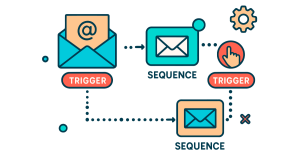Marketing in banking has shifted from a support role to a strategic driver of the bank’s vision. Beyond brand and customer engagement, marketing now helps shape the enterprise narrative, ensuring relevance and loyalty in a digital, customer-centric, and highly competitive market.
Marketing’s Strategic Contribution to Banking Enterprise Strategy
Marketing teams are integral to shaping and executing enterprise strategy in the modern banking industry. In these new financial markets, they act as strategic and executional drivers, ensuring top-level priorities are clearly defined, effectively communicated and successfully implemented across the organization.
Here are some key ways marketing departments are expected to contribute to the broader banking enterprise strategy:
Creating a Customer-Centric Strategy
Marketing plays a crucial role in this shift by leveraging data-driven insights to understand customer needs, behaviors, and expectations. By aligning these insights with strategic priorities such as digital transformation, ESG (Environmental, Social, and Governance) banking, and financial inclusion, marketing ensures that the bank’s initiatives resonate with its target audience, driving engagement and long-term loyalty.
Brand Positioning & Competitive Differentiation
Marketing plays a pivotal role in shaping a bank’s positioning by effectively communicating its unique value proposition within an evolving financial landscape. Through thought leadership, content marketing, and storytelling, it crafts compelling narratives around innovation, trust, and sustainability, reinforcing the bank’s enterprise strategy and strengthening its competitive edge.
Driving Digital Transformation & Innovation
Marketing plays a crucial role in educating and onboarding customers onto digital platforms, such as mobile banking and AI-driven financial tools. Guiding customers’ adoption of new technologies and digital services ensures alignment with industry trends and supports the bank’s enterprise strategy, driving engagement and enhancing the overall user experience.
Crisis & Reputation Management
A robust marketing and communications strategy is essential for maintaining strategic priorities during crises, such as financial downturns or cyber incidents. By delivering proactive and transparent messaging, marketing helps navigate regulatory challenges and manage public perception, safeguarding the bank’s reputation and reinforcing stakeholder confidence.
Revenue Growth & Market Expansion
Marketing drives growth by leveraging targeted campaigns, strategic partnerships, and market research to identify and capitalize on new opportunities. It also plays a key role in regional or international expansion and the launch of new financial products and services by developing tailored go-to-market strategies that ensure successful market entry and customer adoption.
Cultural & Organizational Change Advocacy
Marketing fosters alignment across departments by helping internal stakeholders understand and embrace strategic shifts. Effective storytelling engages both employees and customers in transformation initiatives, such as sustainability commitments and fintech collaborations, ensuring a shared vision and smoother implementation of enterprise strategy.
Changing Narratives In Banking: How Marketing Frames The Transformation
The banking industry is facing a period of significant change. This disruption is driven by technological advancements, shifting consumer behaviors, regulatory pressures, and competitive dynamics. In this environment, marketing plays a critical role in crafting and communicating the bank’s transformation stories, ensuring key stakeholders understand and embrace these changes.
These narratives will help:
- Shape stakeholder perception (customers, regulators, investors) about the bank’s strategic direction.
- Reinforce trust by demonstrating alignment with societal and economic changes (e.g., green banking, open finance, embedded finance).
- Ensure strategic continuity, making complex shifts (e.g., AI integration, open banking, blockchain adoption) accessible and engaging for customers.
Make an Investment in Marketing Technology
To facilitate this change, marketing departments in the banking industry must invest in marketing technology. Leveraging technology is crucial to streamline processes, enhance efficiency, and deliver personalized experiences at scale. A range of digital tools will support these efforts and ensure that banks remain agile, customer-centric, and competitive. These include:
- Marketing Automation Platforms enable banks to automate campaigns across multiple channels, ensuring consistent and timely messaging. These platforms integrate with customer data to personalize communications, trigger automated responses based on user behavior, and optimize engagement through data-driven insights.
- Customer Relationship Management (CRM) Systems centralize customer data, offering valuable insights into behavior, preferences, and engagement patterns. By enabling segmentation and automated follow-ups, CRMs help nurture customer relationships, ensuring that marketing initiatives are aligned with individual needs and business objectives.
- Content Management Systems (CMS) allow for seamless content creation and distribution, ensuring that digital experiences are relevant and personalized. These platforms support omnichannel content strategies, integrating with automation tools to dynamically serve content based on customer preferences and browsing behavior.
- AI-powered tools play a crucial role in personalizing customer interactions and analyzing data in real time to predict behaviors and tailor recommendations. AI-driven chatbots enhance customer support by providing instant, context-aware assistance, while AI-based analytics tools uncover trends, optimize marketing efforts, and improve campaign targeting.
- Social Media Management Tools streamline engagement across platforms, enabling marketers to schedule posts, monitor conversations, and analyze performance. These tools help banks maintain a consistent brand presence, foster customer relationships, and respond proactively to industry trends and regulatory discussions.
- Data Analytics and Visualisation Platforms provide deep insights into customer journeys, campaign effectiveness, and overall market trends. By leveraging real-time analytics, banks can make informed decisions, refine strategies, and ensure marketing efforts are driving measurable business impact.
- Workflow Automation and Integration Tools connect various marketing and sales systems, automating repetitive tasks and ensuring seamless data flow between platforms. This improves efficiency, reduces manual work, and enhances collaboration across departments, providing a more cohesive customer experience.
Where Do You Start?
emfluence provides the tools and expertise needed to create a seamless, scalable marketing strategy tailored to the evolving financial landscape. Our team can help you navigate the complexities of marketing automation, CRM integration, and data-driven personalization, ensuring that your technology investments drive real business impact.
To learn more, connect with us today at expert@emfluence.com.


